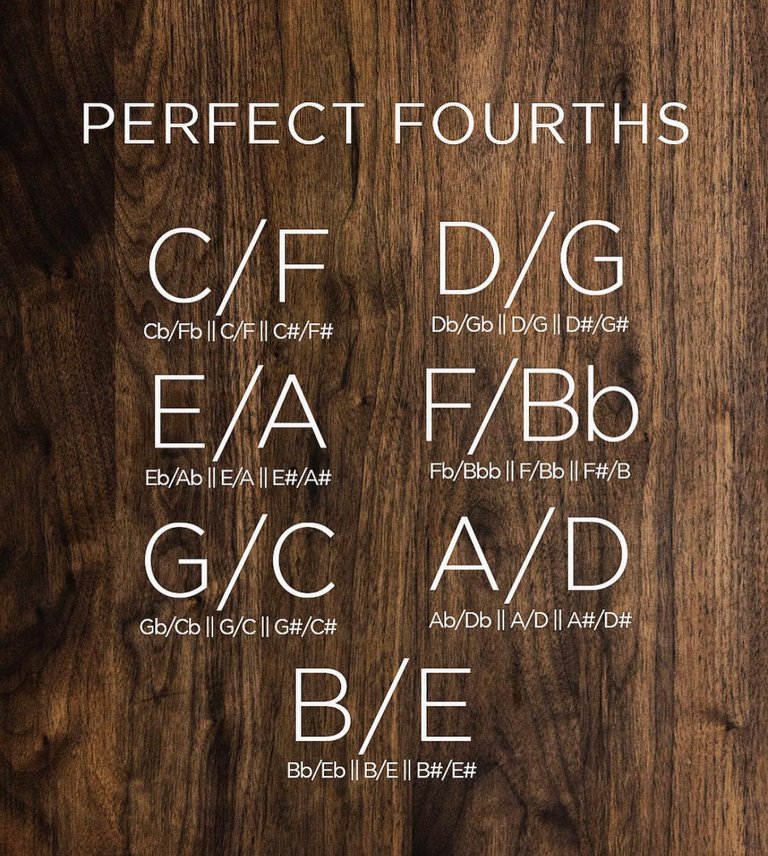
The thing to remember with intervals is that even though this list looks intimidating at first (because I included all the sharp notes, flat notes, and natural notes), as long as you count the "basic", or "natural" versions on your fingers, you can "adjust" the notes accordingly to make the sharp or flat versions.
What I mean by that is, let's say you need a Perfect 4th above Eb (E flat).
Instead of trying to count up 5 half steps from Eb, just start on the "natural" version of Eb, which is E.
Next, use your fingers, and starting with your first finger as E, count up 4 (because you’re trying to figure out a “4th” type of interval, a Perfect 4th) You should end up on A (E, F, G, A). Easy.
Now, what was that note you started with? Eb?
Go back and lower that E you were counting with, down to an Eb. Now lower the A that you landed on, down to an Ab.
And there you go. A Perfect 4th above Eb is Ab. You took both the E down to an Eb, and the A down to Ab, together.
But just a little disclaimer here, that works most of the time. Sometimes the layout of notes can be a pain and counting on your fingers doesn't quite work.
For example, if you were to do that same trick starting on F, you would count up 4 notes on your fingers and end up on B, which is great... except that B is not a Perfect 4th up from F.
Bb (B flat) is actually 5 half steps (frets) apart, not B.
B is 6 half steps apart. I know, it's lame, but you’ll get the hang of it. Just use the counting fingers trick, and watch out for that F and B group!
Yay! 🤗
Your content has been boosted with Ecency Points
Use Ecency daily to boost your growth on platform!
Support Ecency
Vote for Proposal
Delegate HP and earn more, by @donroberts.